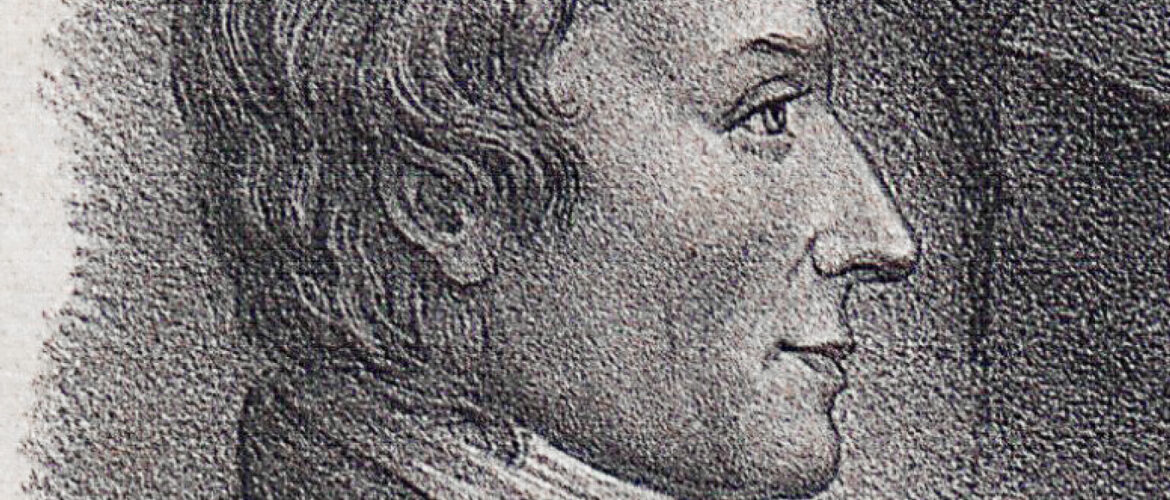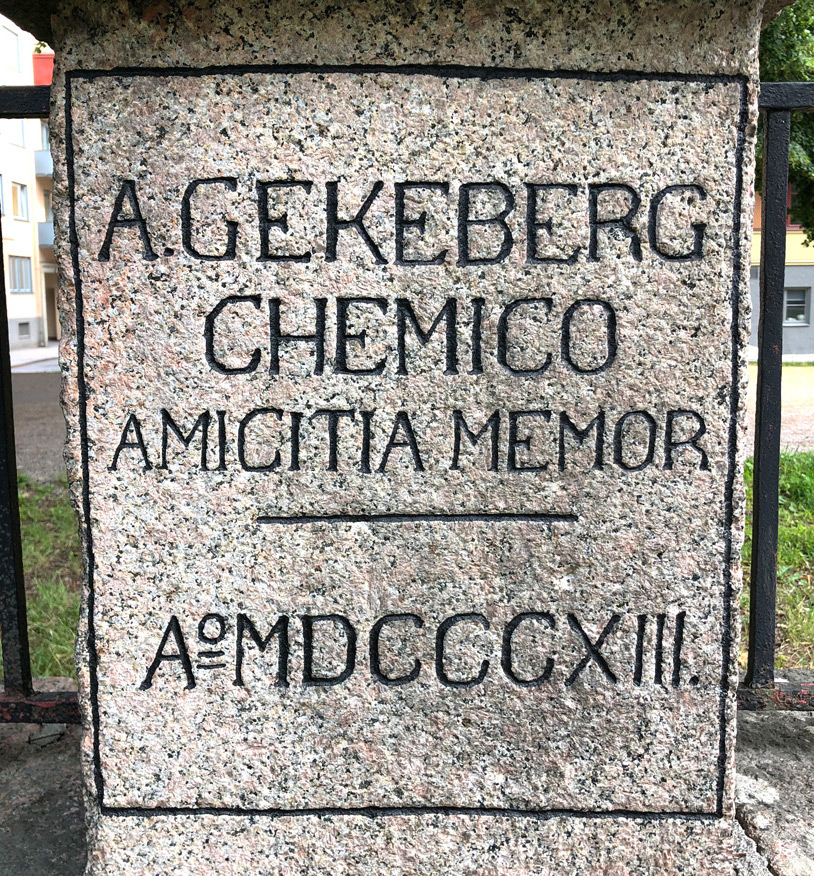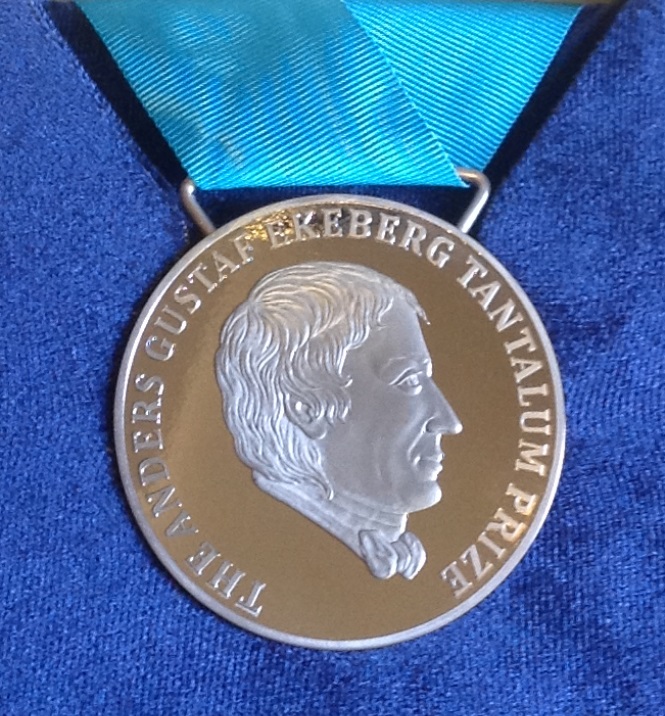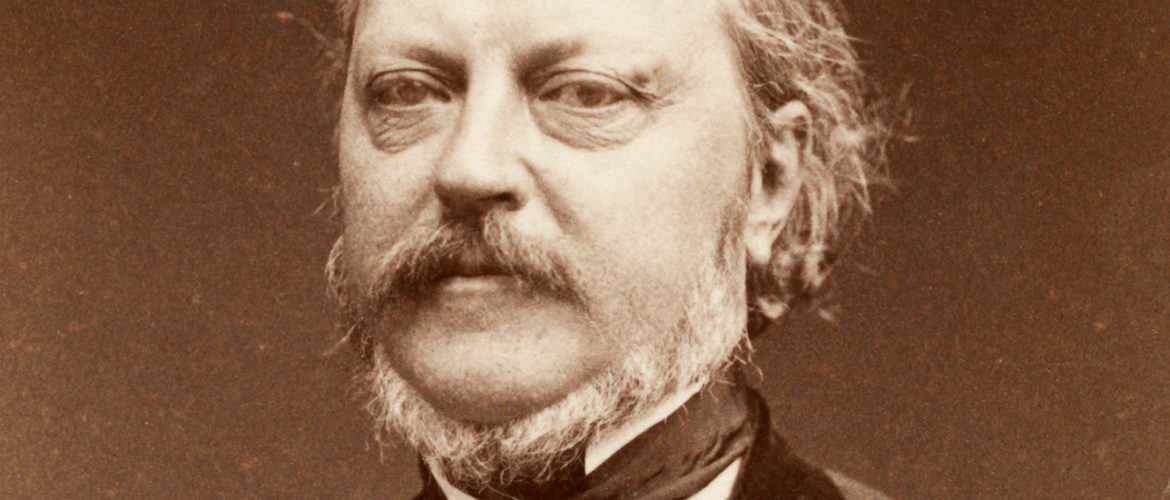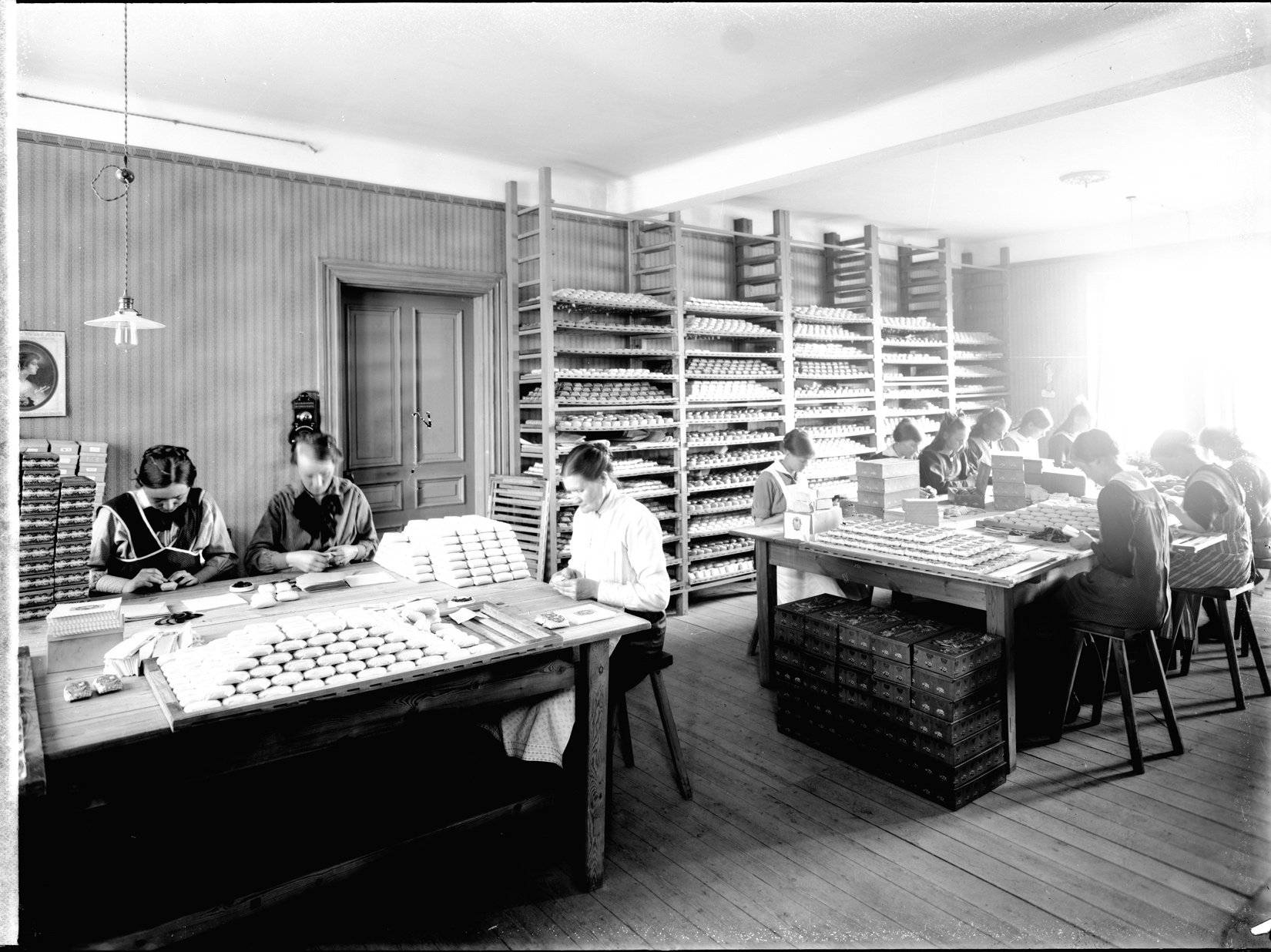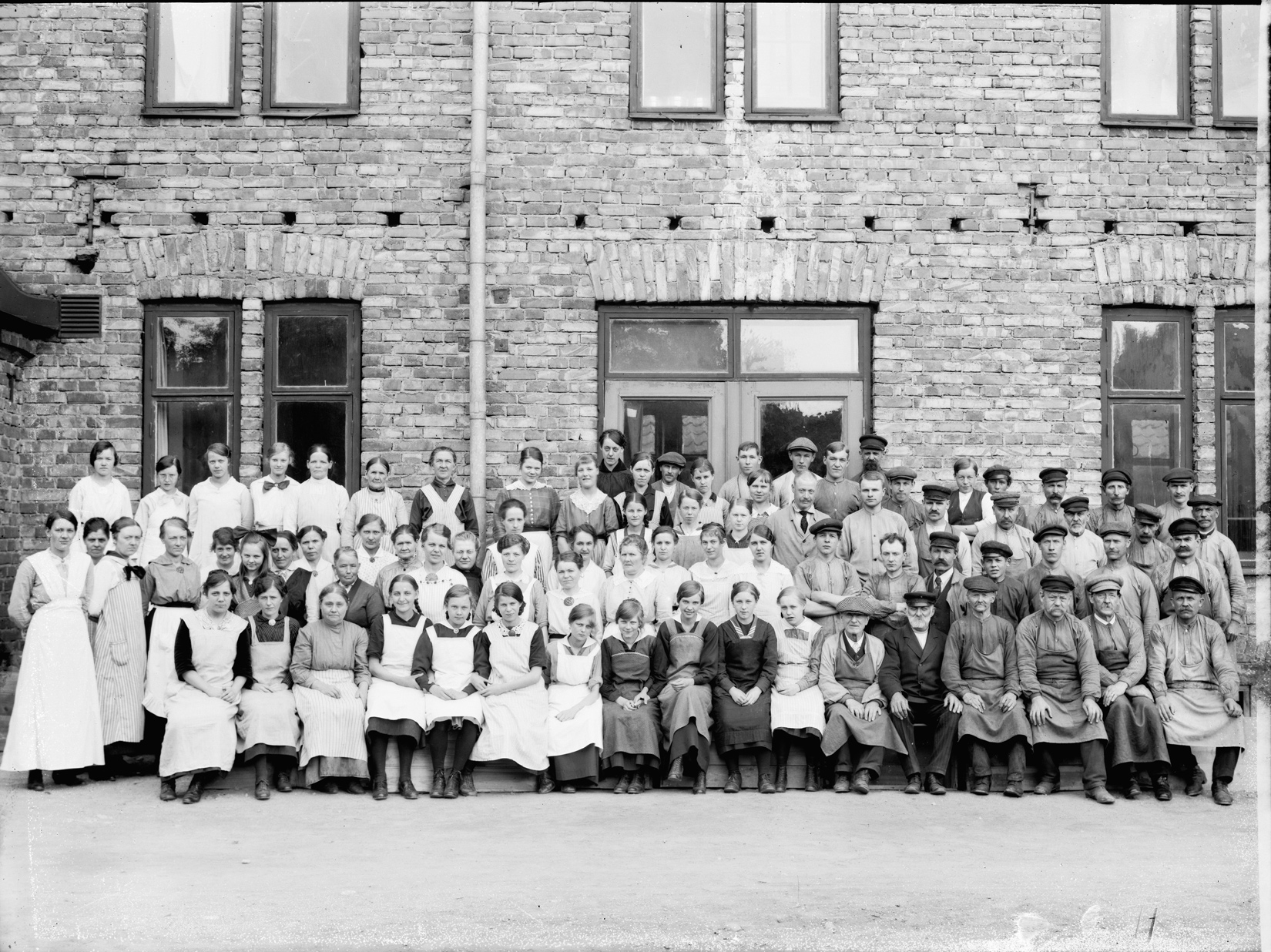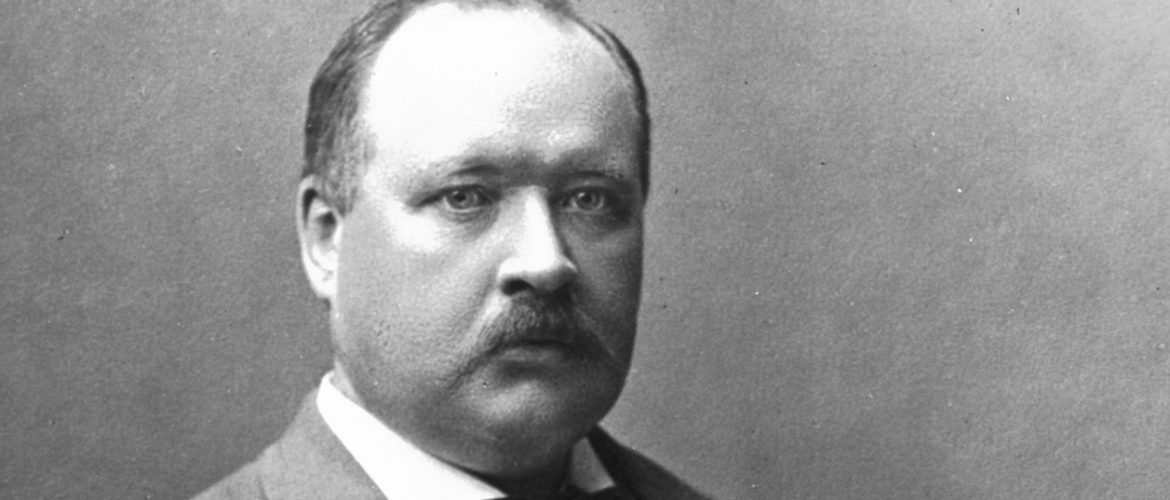1767–1813.
Chemist.
Anders Gustaf Ekeberg was the son of the ship builder Joseph Eric Ekeberg and Hedvig Ulrica Kilberg.
In 1784 Ekeberg was enrolled at Uppsala University, where he was taught by Carl Peter Thunberg. After graduation and study trips, Ekeberg became associate Professor in chemistry in 1794.
In 1799 Ekeberg was elected to the Royal Swedish Academy of Sciences. In 1802 he discovered the element tantalum (Ta).
An explosion accident in the beginning of the 1800's led to Ekeberg becoming blind in one eye.
One of the scientific discoveries that Ekeberg made was a method for producing a strong, clear and translucent porcelain. The secret behind the method, he took with him to the grave.
The friends carved his name on a stone pillar in the cemetery wall and three words in Latin: Chemico (he was a chemist) Amicitia (friendship) Memor (memory) and the death year with Roman letters MDCCCXIII. Photo: Henrik Zetterberg.
In recognition of Ekeberg's pioneering work, the TIC (Tantalum-Niobium International Study Center) institued an award in 2017 to promote knowledge and understanding of tantal. The award was called the Anders Gustaf Ekeberg tantalum Prize ("Ekeberg prize") in his memory.
Burial site: 0101-0030
Image description: Portrait of Anders Gustaf Ekeberg from Mellin, Gustaf Henrik (eds) 427 porträtter af namnkunniga svenske män och fruntimmer, Stockholm, 1847. Photo: LIBRIS-ID: 1579474. [The image is cropped]
Click here for an uncropped image

